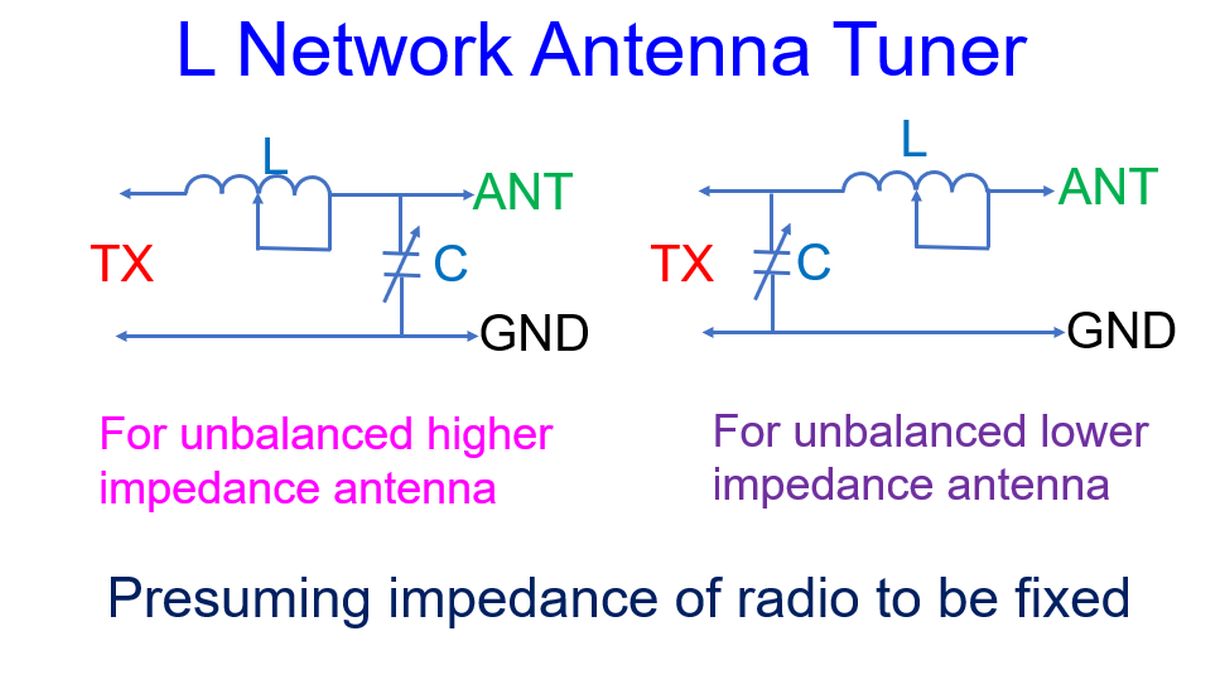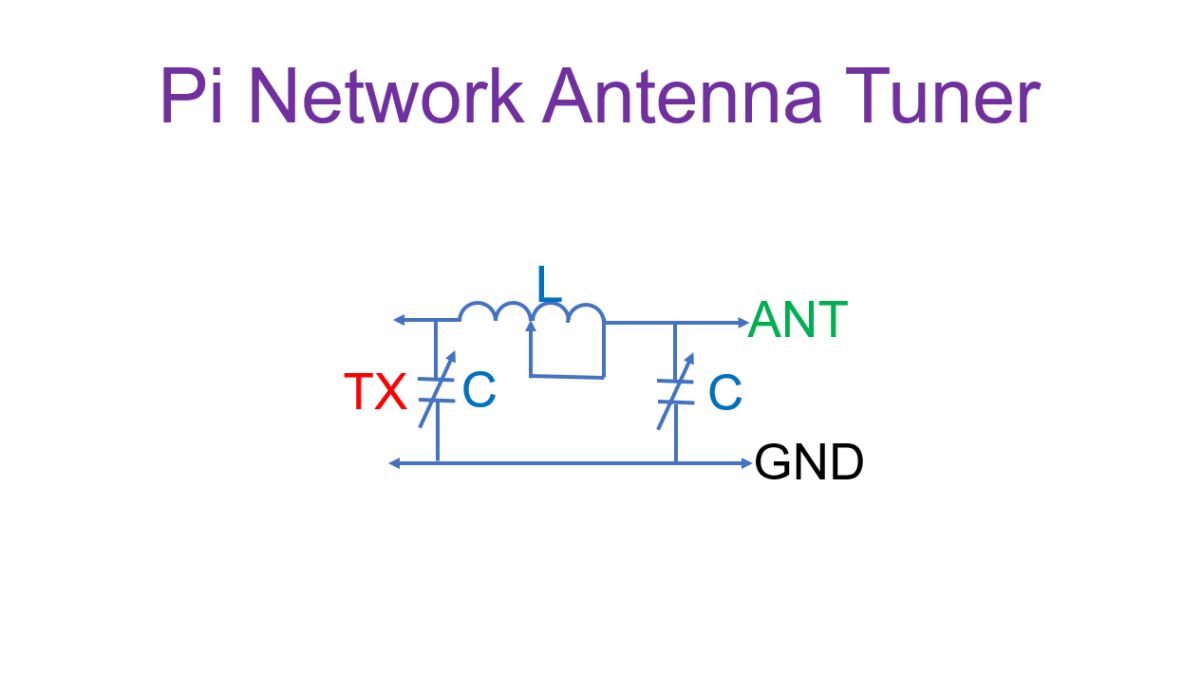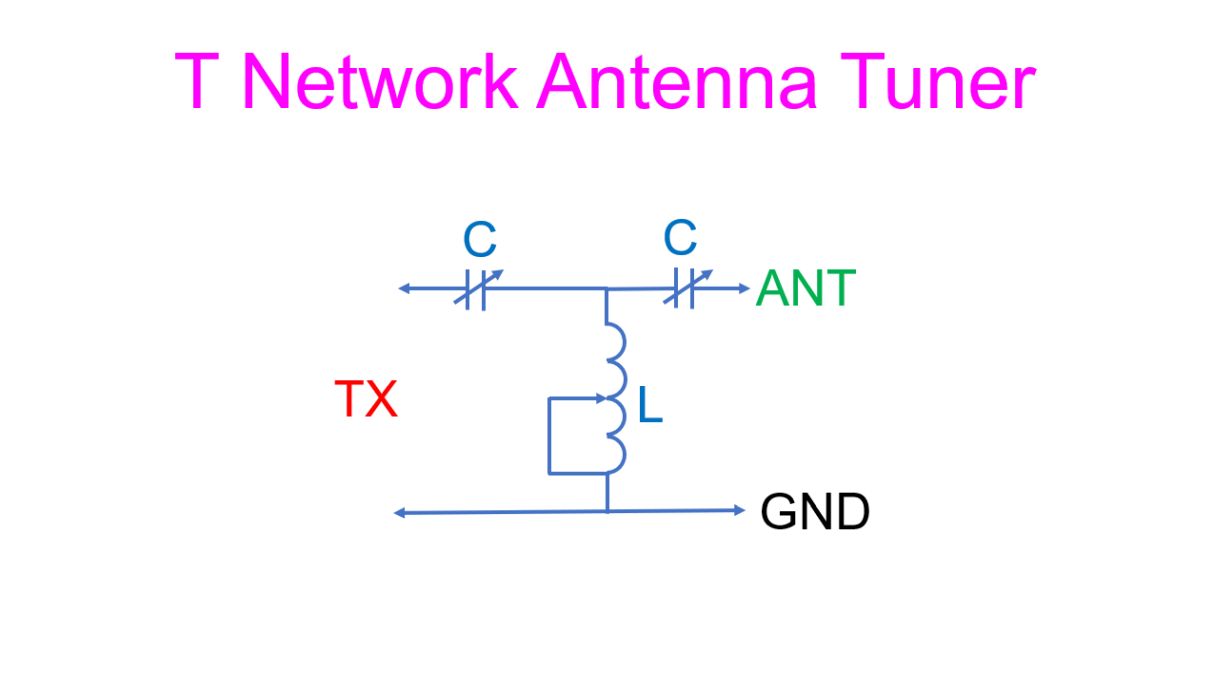Basic Types of Antenna Tuners
Basic Types of Antenna Tuners
Antenna tuners are used to match the output impedance of the radio to that of the transmission line – antenna system. Short discussions on automatic antenna tuner and remote antenna tuner have been posted earlier. Now we will discuss a little bit about the types of antenna tuners from the homebrewer’s point of view. Three basic types of antenna tuners are L network antenna tuner, Pi network antenna tuner and T network antenna tuner. There is also a more complex symmetrical Pi network which uses a couple of synchronized variable inductors. Symmetrical Pi network being more complex and meant for balanced antenna systems, will not be discussed further now.
L Network Antenna Tuner
L network antenna tuner could be implemented in two ways. One with variable capacitor at the antenna end, for matching an antenna with higher impedance than the radio and another with capacitor at the radio end to match an antenna with a lower impedance than the radio. In both, the variable inductor is placed in series and variable capacitor in parallel, as shown in the diagram. A rotary switch can be used to switch the conncection of the shunt capacitor from one side to other, to change from one type to another. This arrangement may be useful when you wish to change from an antenna with higher impedance like a folded dipole to one with a lower impedance like a half-wave dipole. L network tuners are quite popular and seen in production tuners.

Pi Network Antenna Tuner
As the name implies, the Pi network antenna tuner circuit resembles the Greek letter π. It is similar to the Pi tank used in vacuum tube radio in yester years. Pi network antenna tuner has two variable capacitors and one variable inductor. Pi network can have more than one resonance point with different component values. It has more power losses to heating than an L network antenna tuner. Having three knobs to tune could be more time consuming. Yet it is broad banded and able to match wider range of frequencies. As the Pi network acts as a low pass filter, it can suppress harmonics, an important concern when you homebrew radios. If extra capacitance is needed, an additional fixed value capacitor can be added with a switch. Setting one capacitor to zero converts a Pi network to an L network. Pi network is used to match a radio with higher impedance to an antenna with a lower impedance.

T Network Antenna Tuner
T network antenna tuner has two variable capacitors in series and a variable inductor connected in parallel, at the junction between the variable capacitors, thus forming a T configuration. This configuration functions as a high pass filter. It can be used to match at wide range of frequencies and is used in majority of commercial antenna tuners. T network has higher power losses than L network. T network can be considered as two L networks connected back to back, with the inductor being common for both sides.
